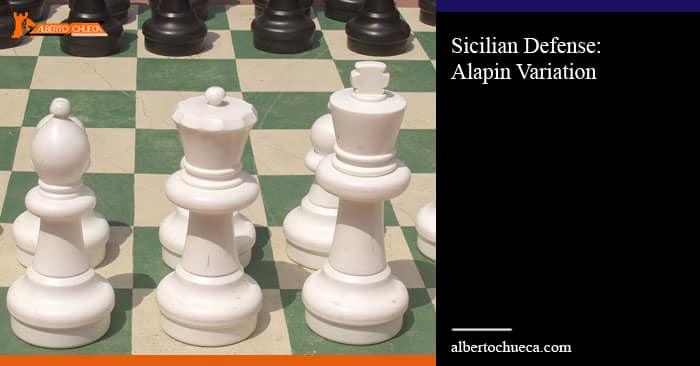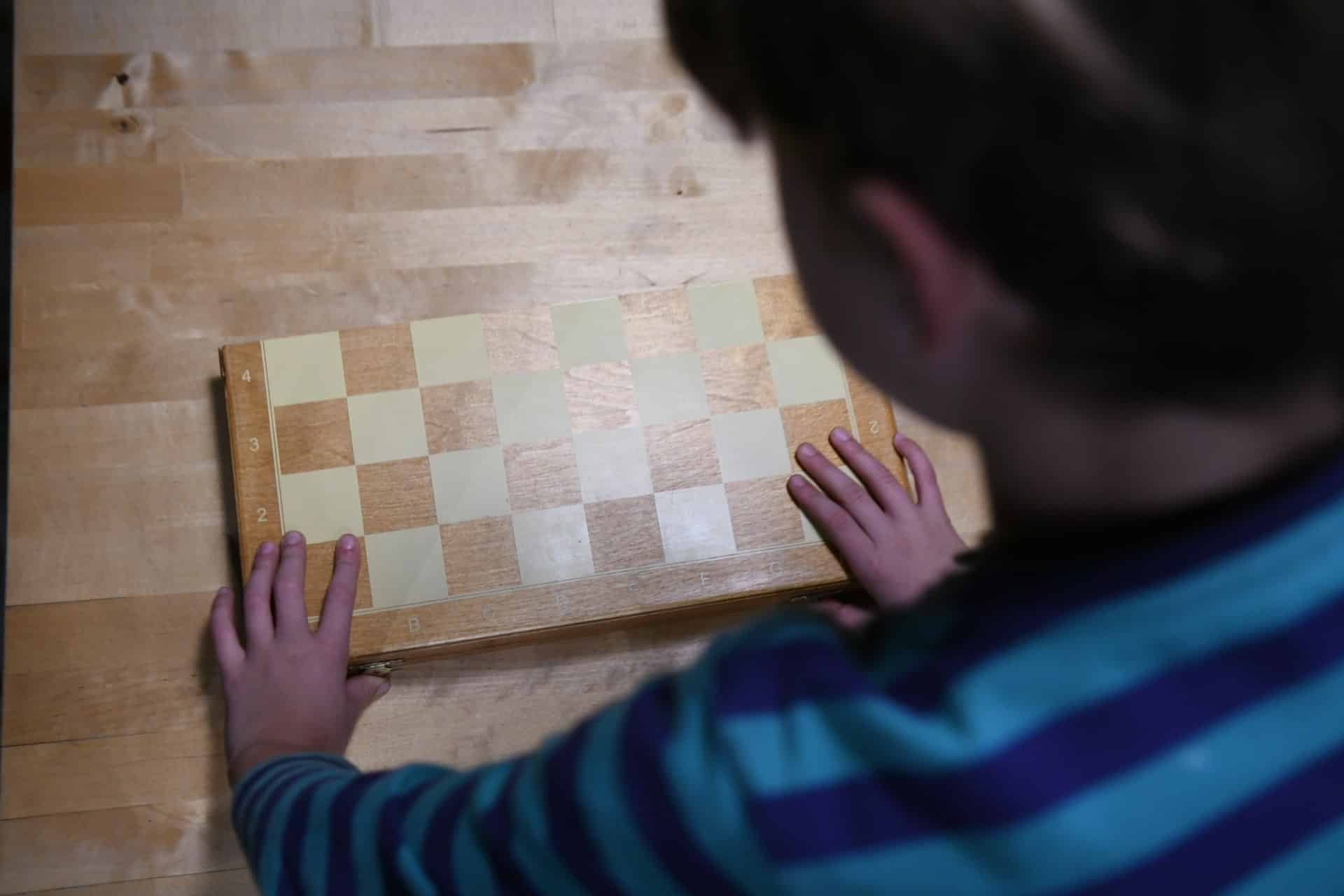Table of Contents
Alapin Variation
Alapin Variation is considered one of the best and most solid systems White can play against Black’s first move 1. … c5. King’s Pawn players, face Sicilian Defense very often, and when White chooses the mainline, Open Sicilian with 2.Nf3 and 3.d4 later, Black has a set of sharp and strong lines, like Najdorf, Scheveningen, Pelikan, Kan, Dragon…
1.e4 c5 2.c3
But when White plays 2. c3, all those options are off the table for Black. The game is going to be slower and quieter, which in general is annoying for Sicilian players. Not so much theory is needed, and the positions are much easier to understand and play.
The idea with White’s second move c3 is to play 3.d4 and after the trade 3. … cxd4 be able to recapture with another pawn, so the first player could have a very strong and annoying center of two pawns, which would guarantee at least a small advantage.
Some theory and ideas in Alapin Variation
After 2.c3, Black has two main lines: 2. … d5 (breaking the center immediately) or 2. … Nf6 (attacking e4 pawn), which are stronger and much more frequently played than other options (notice that these moves are in some way trying to avoid 3.d4) so those are the lines we will study the most in this post.
a) 2. … Nf6
The drawback of this move is that this Knight is very exposed now, so, White can advance the central pawn with a tempo and get some space.
3.e5 Nd5 4.d4 cxd4 5.Nf3 (no rush to recapture on d4, that pawn is pinned because the Knight is unprotected on d5) 5. … Nc6 6.cxd4 d6 7.Bc4 Nb6 8.Bb5
The position is balanced, maybe very slightly better for White because of the small space advantage and possibilities to develop very quickly.
b) 2. … d5
This is my favorite for Black. The drawback this time is that the Queen is going out maybe too early in the opening after the capture on d5. White cannot use c3 with the Knight to develop and get a tempo by now, but almost for sure, they will be able to do it later, after the trade on d4.
3.cxd5 Qxd5 4.d4 Nf6 5.Nf3 e6
Black can also play 5. … Bg4 here, and develop the Bishop outside the chain of pawns. But this option is not better than e6 directly.
6.Be3
Putting pressure on c5, forcing Black the trade on d4 so the white Knight can be developed over c3. There is also this nice and tricky line with 6.Na3. It seems like the Knight is very bad placed on the edge of the board, but nothing could be further from the truth. White prepares Nb5-c7, and even if Black defends c7 with the Queen; moves like Bf4 are really strong. Plus, after the prophylactic a6, there could be Nc4-b6 with another fork.
- … cxd4 7.cxd4 Nc6 8.Nc3
And White is very slightly better.
c) In general, against other options, White can play d4 and stay with a center of two pawns, which is the main idea after c3. However, I wanted to mention this line because there is a very nice trick where White can get a piece if Black plays negligently.
2. … d6 3.Nf3 Nf6 4.Be2 Nxe4?? 5.Qa4+ Nc6 6.Qxe4
The trick gets even more interesting. If Black realizes they should not capture on e4 because of the check and play 4. … Nc6, then it continues:
5.d4 Nxe4?? 6.d5! Ne5 7.Qa4+ getting the Knight on e4 again
Interesting fact:
- … cxd4 6.cxd4 and now Nxe4 is still acceptable for Black. The idea is that after 7.d5, Black can play Qa5+ and avoid Qa4+.
Typical Pawn Structures in Alapin Variation
In the two mainlines Black can play, White could end up with an Isolated Queen Pawn, so, it is very important to understand the ideas for this pawn structure.
White: a2, b2, d4, f2, g2, h2
Black: a7, b7, e6, f7, g7, h7
The main question here is “Can Black slave white pieces defending the isolated pawn?” If that happens, then the second player will have the advantage. But if the first player takes the initiative, exploiting the space advantage and attack possibilities in the Kingside, then White could have a very clear advantage.
Sometimes White can also try to break on d5 and get rid of the isolated pawn. This is also a typical and strong plan, that is why Black needs to block the pawn on d4, maybe by bringing a Knight to d5.
Typical Plans for White
White should drive the Knight to e5, where it will be very well placed in the center and controlling many interesting squares. The “c” and ”e” files are very important for the Rooks. The first player has some pretty good possibilities to start an attack against the castled King, so Black must play very carefully in these lines.
Typical squares for white pieces in Alapin Variation
King:
White has to castle Kingside almost always.
Queen:
Very often in the middlegame, the Queen can go to e2, where it controls the half-open “e” file, clears d1 for some Rook, and sometimes when possible, it could go to e4, setting a mighty Queen and Bishop battery.
Rooks:
“c” and ”e” files are very well for the Rooks in these lines. Also, the “d” file is important, because a Rook would be protecting the isolated pawn and an eventual advance to d5.
Bishops:
Light squares Bishop goes to d3, from where it targets h7. Sometime c4 could also be fine, fighting against the black blockers on d5 and guarding the break over that square. The dark squares Bishop can go to e3, protecting the isolated Pawn, or to g5, threatening to trade the important Knight on f6, which is one of the main defenders in the Kingside.
Knights:
The Queenside Knight goes to c3 very often, controlling the center and supporting the already mentioned break on d5. Sometimes it can go to e4, advancing towards the Kingside and threatening some enemy piece. The Kingside Knight goes to f3-e5 almost for sure.






